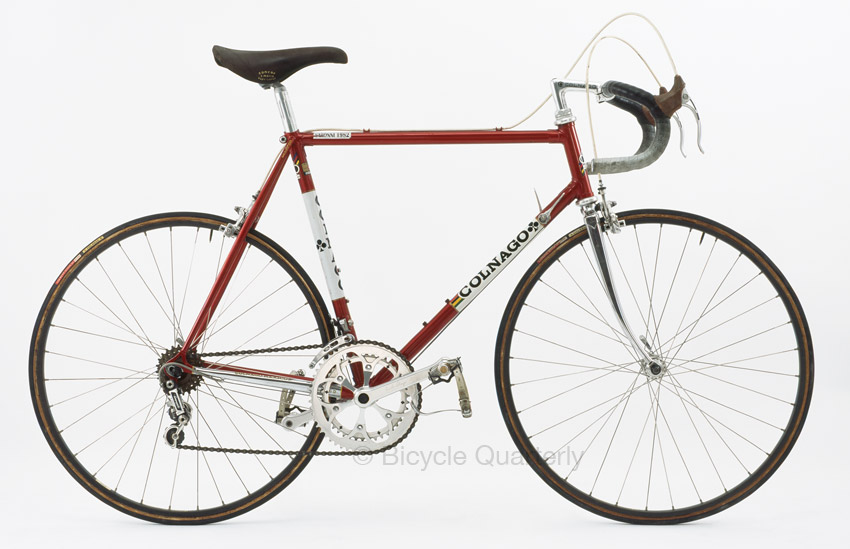Charity Drive and Saronni's Colnago

Our charity drive for the Museo del Ghisallo was a great success. We sold 80 calendars and have donated the entire proceeds – more than $ 1200 (900 Euros) – to the Museo. Not only will the donations help re-open the museum, but they also show the interest and passion for this unique place. Hopefully this will help secure the public funding that any museum needs.
Above is one of the amazing bikes I saw at the Museo when I visited: a beautiful Colnago with 650C wheels. It is said to have been built for Guiseppe Saronni in 1982, the year he won the World Championships.
Saronni, as a sprinter, should have benefited from smaller wheels, which weigh less and thus “spin up” faster. It doesn’t seem to have worked out that way, since race photos show him on a 700C bike in 1982. Why didn’t Saronni use the advantage of the smaller wheels?
If you have a flat on 650C wheels, you’d have to wait for your team car, since no “neutral support” would carry the correct wheels. As a secondary concern, the handling of a small-wheeled bike inherently is less stable. (Our 650B bikes are stable because they use much larger and heavier tires than a 21 mm-wide tubular.) Despite these disadvantages, if the smaller wheels provided a significant benefit in a sprint, then a strong sprinter like Saronni would gladly accept the disadvantages. He might have to be a bit more careful in corners, but then he’d win every race in which he doesn’t have a flat!
The fact that Saronni – and many others who experimented with smaller wheels – didn’t race them indicates that the rotational inertia does not make a big difference in how fast a bike accelerates. Physics tells us that even world-class sprinters don’t accelerate all that quickly – a sprint begins at 65 km/h and about 100 meters later, racers may reach 85 km/h.
While we are at it, did you notice something else that is unusual about the Colnago? The cranks have six arms to hold the chainring. Knowing that the three arms of a René Herse crank are plenty to transmit the torque of even a strong tandem team, I wonder why they came up with that idea.
Those who contributed to the charity drive will enjoy this Colnago on their wall come May next year. For those who missed out on the charity drive, you can still donate to the Museo here.
And if you still don’t have the 2014 calendar, limited quantities still are available here.


